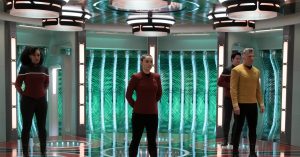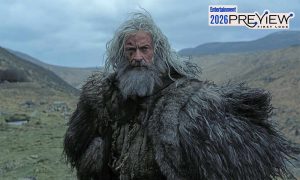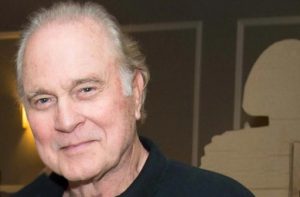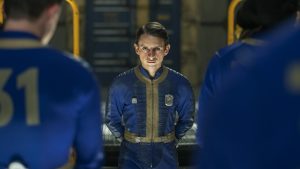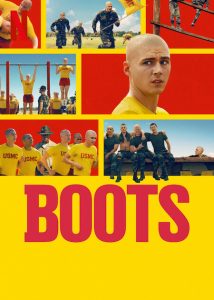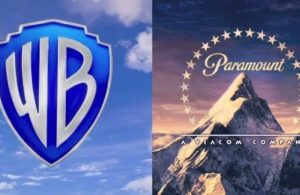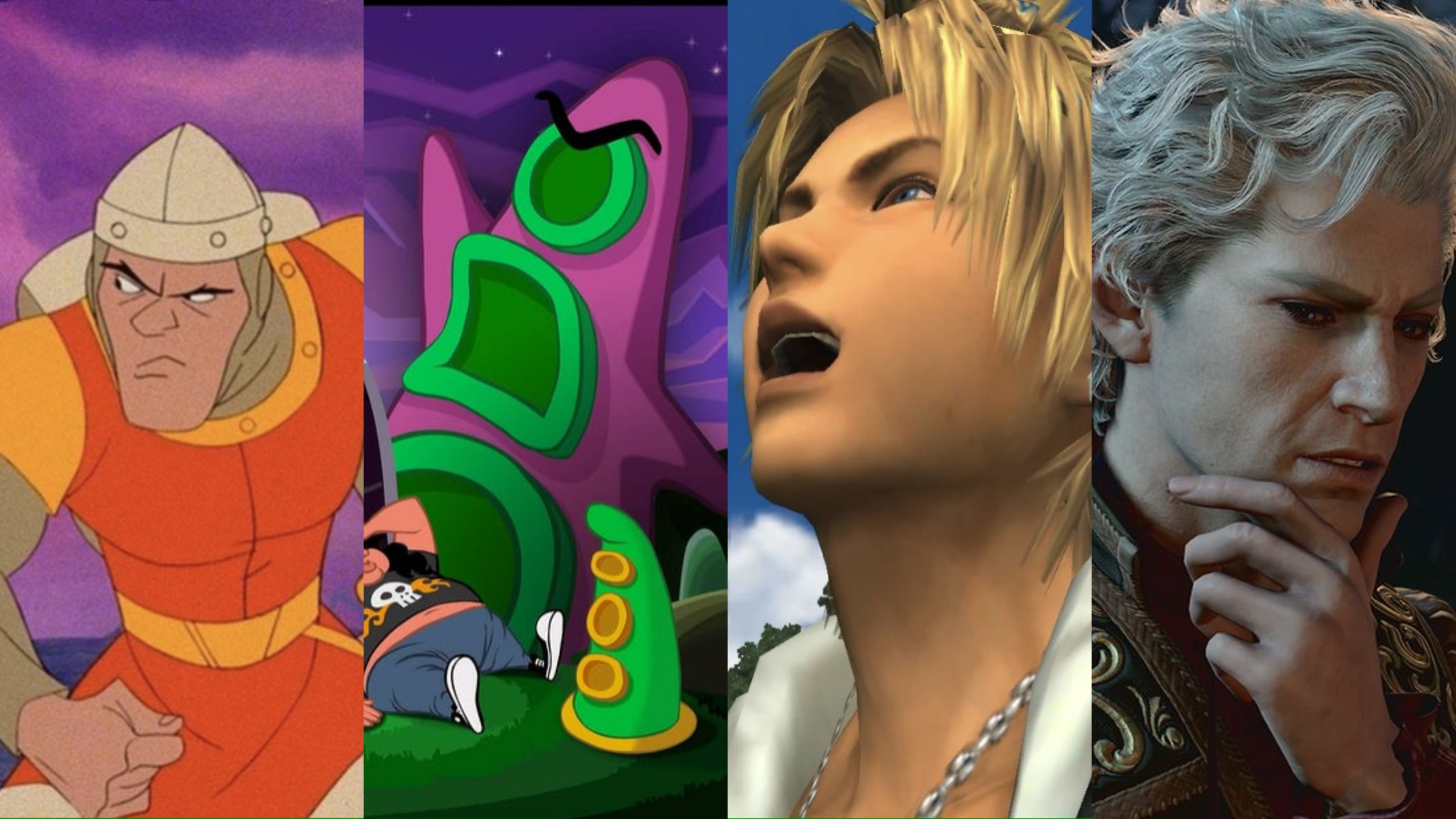
Despite a union with SAG-AFTRA and increasing attention paid to the very best voice acting performances in the industry (we see you, Neil Newbon, and damn, do we appreciate you), it’s still easy to take those performances for granted. It’s part and parcel of a medium that still struggles with being recognized as an art form, and one where those union protections don’t yet protect the most vulnerable performers.
Voice acting is often the key to whether a story-heavy game sinks or swims. Granted, it is possible for a game’s voice acting to become iconic, even with a crappy dub. The original Resident Evil is still a meme for B-movie lines like the Jill Sandwich, and Shenmue’s English voice acting, respectfully, flat-out sucks. But a truly remarkable job, like the whole of Final Fantasy XII or Nolan North’s various appearances as Nathan Drake, reminds us why it’s important to remember our roots, appreciate the creators, and look to a future that keeps on improving.
Insert Coin For Drama
Video games looked to the human voice to provide excitement as early as 1980, with the diabolical arcade game Berzerk giving its tiny red droid enemies a variety of synthesized phrases they could utter while trying to destroy you. The digitized speech was costly to create and compress, meaning that home sufferers didn’t get to hear these creepy bastards for themselves until the Atari 5200 hit retail. And those bastards were creepy. They and the smiling Evil Otto are signature features of old-school nightmares.
Today, you can find one of the new Atari 2600+ consoles to mimic what true terror was like when I was a kindergartner. To commemorate how important Berzerk was to the Atari audience back in the day, you can also get a freshly minted cartridge of the enhanced edition for $30. Or you can always learn about the joys of a Raspberry Pi and find out for yourself that way.
Just three years later, the Don Bluth-animated Dragon’s Lair came to arcades and damn near every home console ever made since then. That fun little early walking sim with a handful of quick time events to keep you feeling like you were doing something, also provided a fully voiced experience. It wasn’t a top-shelf pro job, because Don Bluth is the unloved John Carpenter of animation and is constantly digging in his couch cushions to finish a gig. But it was the first to do something we take for granted now: using our voices to help tell an intricate story. While it would take until the Playstation 2 era for full voice acting to become the norm, the flagstones had been laid decades earlier.
Clunky Synthesis and the LucasArts Leap
Fragments of voice work, usually synthesized, became an occasional feature in the ‘80s. Due to technological limitations, home computers (like the Commodore 64) and arcade cabinets were where the cutting edge of audio gimmicks were found. A good example is the opening narration of Transformers: Battle to Save the Earth in 1987. It exists to set the game’s tone, and the gravelly digitization emphasizes the nature of these robot saviors.
Six years later, LucasArts managed the quantum leap that had eluded previous studios by crafting a heavily voice-acted game where the player was also fully involved in exploring the game for themselves. That game was Maniac Mansion’s beloved sequel, The Day of the Tentacle. More than just a technical and structural leap forward, it even featured professional performers like 24’s Nick Jameson and WKRP in Cincinnati star Richard Sanders. A legendary accomplishment still beloved today, Day of the Tentacle might’ve inspired LucasArts to go all in when tweaking Indiana Jones and the Fate of Atlantis for its CD-ROM release. They couldn’t get Harrison Ford, but Doug Lee, a Dynasty Warriors veteran, did a great job in his stead.
With professionals showing how it could be done, budgets and access still meant full coverage voice acting was an investment game studios wanted to manage as cheaply and as efficiently as possible. Even still, there were definite standouts during the PlayStation 1 era, like Legacy of Kain: Soul Reaver, which featured the stentorian Disney voice veteran Tony Jay and Metal Gear Solid, which turned David Hayter’s Snake into a video game icon.
But for each historical moment, there were some truly terrible lows. The original Resident Evil received its kudos earlier for some truly choice moments of audio horror, but it’s Valkyrie Profile that overcomes an incredibly awkward dub to become one of the best strategy games of the era. The American voice cast of Pokemon, from Veronica Taylor (Ash) to Eric Stuart (Team Rocket’s James) offer an inconsistent but enthusiastic experience, proving it’s not just the voice that matters, but ensuring they’re given direction.
Not long after these experiments, Final Fantasy X and the PS2 ensured voice acting would become a crucial part of a game’s success going forward.
The Crystal Calls
Released in 2001, Final Fantasy X debuted long past the chance to be the first fully voiced video game, even in the modern era. However, it was the first Final Fantasy game to use voice acting to carry the heart of its story. Crucially, the game also relied on a notable cast of professionals to bring that story to life.
Looking back at the voices of Spira, we find names familiar today. As a staunch defender of Tidus’ awkward but earnest tone, I’m delighted to remind you that James Arnold Taylor has long since proven his chops, and, as the animated voice of Obi-Wan Kenobi, he holds equal footing with Ewan McGregor in continuing the Star Wars legacy. Meanwhile, both Wakka and the reticent Kimarhi are voiced by current vocal legend John DiMaggio. Then in the early years of his career, he was already known as Futurama’s Bender.
Final Fantasy X’s fully voiced FMV sequences offered a chance for these pros to create huge cinematic memories out of Square Enix’s already showstopping CGI plot checkpoints. They also added depth to the quieter moments, FMV and otherwise. Lulu’s harsh but protective manner comes through in a way text alone would’ve lost, making a potentially unlikable character into a dark horse fave who comes back for the girl power sequel. Rikku, at first squeaky and annoying, lures a player into ignoring her until the conflict between her Al Bhed brethren and Spira’s religious power structure lurches inescapably into the foreground.
The only drawback, arguably, is Square’s already visible adoration of more. More characters, more plot twists, more intrigue, sometimes fuzzing the twinned themes of faith and grief for the sake of jamming as much complication as possible into the flagship series. At least the unique voices help carry the threads!
Final Fantasy XII then upped the ante with a translation that combined iambic pentameter and hefty, archaic dialogue translated from the original, delivered by top-shelf performers like Gideon Emery, Nolan North, and English soap star Anita Carey. With a plot so intricate it borders on filigree, the troubles of Ivalice are as beautiful as they are impenetrable.
Square set a new gold standard for video games, and it was up to the industry to catch up. It probably helped their competition that Final Fantasy XIII, enamored with its own glitz, is the messiest, most convoluted Final Fantasy to date. Not even its fine cast can untangle the chaos connecting these two worlds, but at least it’s still fun to play.
Serkis Folk
While the industry began to embrace the power that quality voice acting job could imbue their games with sometime around the early 2000s, there was still room for new landmarks to shape the map.
In 2007, Bioware launched Mass Effect: the first entry in an epic RPG sci-fi saga that featured a fully-customizable and fully-voiced main character. With Mark Meer as the male version of Commander Shepard and Jennifer Hale as the female option, gamers watched firsthand as these two performances hit different nuances during different points of the trilogy, making each protagonist even more unique. Hale’s firm competency and her warmth during her more personal scenes with teammates make her iteration of Shepard easy to think of first, despite statistics that suggest too many of y’all still play as the guy.
Yet, Mass Effect was only one checkpoint for the next generation of video game voice acting. With expectations for what was quickly becoming more traditional video game voice acting on the rise, more and more studios began to turn to new forms of motion capture technology to enhance increasingly important video game performances.
Previously, motion capture was used for games where the fluidity of movement mattered most (such as 1989’s Prince of Persia and the world of fighting games). When paired with the human voice, though, that technology helped draw us even further into the worlds beyond our controller.
Yet, some of the more notable early innovators in the area of motion capture voice acting are remarkably obscure relative to their accomplishments. For instance, when 2007’s Heavenly Sword is remembered at all, it’s largely remembered as a stylish action game that put too much effort into its sexy centerpiece to the detriment of pretty much everything else. However, to bring Nariko to life, studio Ninja Theory recruited The Lord of the Rings’ Weta Workshop to push facial capture forward. They even relied on Gollum’s own Andy Serkis to direct the motion capture team.
Then, in 2010, Serkis and director Alex Garland worked together on a largely obscure action game called Enslaved: Odyssey to the West. It was a sci-fi take on the Chinese legend of Sun Wukong (the same legend Dragon Ball is inspired by), that saw Serkis combine his physicality and voice into the hulking Monkey. It was remarkably released just one year before Serkis became a far better-known ape named Caesar for the rebooted Planet of the Apes franchise and a decade after he showed the world that voice and motion capture could bring a soul as unnatural as Gollum to life for The Lord of the Rings. Serkis is a surprise prophet for the cinematic quality of today’s video games that was somewhat unrecognized in his time, but a nice twist for anyone looking into the history here.
And Here We…Go
It’s that new blend of cinematic acting and voice that evolved once simple video game sounds into something so much more impactful. The already considerable gift of the human voice had grown into a near-total mimicry of the cinema experience.
This incredible period of expanded technical abilities allows developers to fully explore both what is possible now and what comes next. Some games in this new era argue that we’re gradually shifting back to the era of Dragon’s Lair by simply pushing buttons while waiting for the next cinematic checkpoint. Other titles, like Death Stranding, blend massive real-world casts and hours-long cutscenes as their contributions to the eternal argument over the relationship between art, cinema, and the purpose of gaming. Then you have games like The Last of Us, which recently received an acclaimed adaptation that was initially derided by some over the suggestion that we already played that series.
Ultimately, these games continue to draw lines between different eras and show how voices have helped evolve the medium we love. There’s still something special about being able to listen to and connect with a story in an intimate way via a voice performance, whether it’s Skyrim‘s Paarthurnax telling us about our potential natures or journeying with Horizon‘s Aloy, awed and horrified at the way the world ended.
What’s to come next will probably further blur the line between the passive film experience and the active video game. But despite the exact nature of the next leaps forward, they will undoubtedly rely on the eternal power of the humble human voice and how properly capturing it still has the ability to move us.
The post The Overlooked Evolution of Video Game Voice Acting appeared first on Den of Geek.



